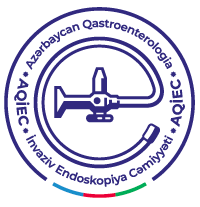ABSTRACT
We incidentally found an accessory spleen (AS) during gross pathological examination of the greater omentum of a 58-year-old female patient who underwent omentectomy for a debulking procedure. Lymphoid follicles and splenic pulp were observed under microscopic examination to confirm that it was the splenic tissue. This patient was previously diagnosed with endometrial adenocarcinoma four years ago. At the time of hospital admission, our patient had no symptoms indicative of splenic abnormalities. ASs are typically found in the splenic pedicle and hilum, but they may also be rarely be seen in the greater omentum. It should be considered in the differential diagnosis of lesions in the greater omentum.
INTRODUCTION
An accessory spleen (AS) is a minor nodule of splenic tissue located separately from the main body of the spleen, sometimes known as a supernumerary spleen or a splenunculus. Generally AS is found in 10% to 30% of the population and is thought to form during embryogenesis [1]. Their size varies; most AS remain small nodules, and some of them may resemble lymph nodes. They often present as round, uniformly grown, well-marginated masses. They are frequently found adjacent to the splenic hilus and vascular pedicle, the splenocolic ligament, the splenic artery, and the pancreatic tail [1-3]. However, they are occasionally found within the gastrointestinal tract, the greater omentum, the left ovary/testis, and the pouch of Douglas [3]. Here, we report a rare case of AS that is located in the greater omentum of the female patient and was diagnosed postoperatively with histopathological examination.
CASE PRESENTATION
A 58-year-old female patient was admitted to the hospital for a debulking procedure for metastasis from endometrial cancer, as this woman had undergone hysterectomy 4 years prior due to the diagnosis of endometrial adenocarcinoma. The goal of debulking is to remove the cancerous tissue in the patient’s abdominal cavity and increase the chance that chemotherapy or radiation therapy will kill all the tumor cells and relieve symptoms. On hospital admission, the physical examination findings were unremarkable. Complete blood count and liver function tests performed in the laboratory came back within normal ranges. Tests for hepatitis C, syphilis, and HIV all were negative. Slightly elevated C-reactive protein could be due to an inflammatory process related to metastasis. On chest radiographs, focal and infiltrative changes were not detected in the parenchyma of the lungs. The left costodiaphragmatic recess was blunted due to pleural adhesions, and the right side was unremarkable. An electrocardiogram (ECG) revealed left ventricular hypertrophy, sinus bradycardia, and decreased anterolateral coronary blood supply. In addition to the ECG, the echocardiogram showed decreased systolic function with a 45% left ventricular ejection fraction. A computed tomography scan of the abdomen with contrast revealed decreased density of liver parenchyma consistent with fatty infiltration, and the right lobe of the liver was enlarged to 20 cm along the craniocaudal direction. The gallbladder wall, intrahepatic and extrahepatic bile ducts, common bile duct, pancreatic parenchyma, and main pancreatic duct were within the normal range. Subcapsular, 25x16 mm sized, non-specific cystic lesions were noted in the posterior portion of the spleen. Additionally, multiple 20x30 mm necrotic and small-sized cystic masses were noticed in the right paracolic gutter. Some implants not exceeding 10 mm in diameter were observed in the peritoneal lining of the left lower quadrant of the abdomen. Other necrotic implants that were sized 20x22 mm, 24x22 mm, and 16x8 mm were noticed in the greater omentum. No other pathologic process was noted in the abdomen. After evaluation of all diagnostic and laboratory results together, the results raised suspicion of peritoneal carcinomatosis.
At the omentectomy, some well-marginated irregular masses were observed in the greater omentum. After dissection, a greater omentum with masses was sent for pathohistological evaluation. A gross examination of masses over the greater omentum revealed 2.0-2.5 cm yellow, hard nodules in 5 different locations, and a 1.0 cm red-colored and firm nodular lesion to the side of them (Figure 1). Microscopic examination reveals the loss of individual glandular contours with gland fusion and lack of intervening stroma of the yellow, firm nodes, which were thought to be caused by metastasis of previous endometrial carcinoma. Another 1 cm sized nodule’s microscopic examination showed lymphoid follicles and splenic pulp, and the surrounding capsule that are the characteristic features of the AS (Figure 2). As a result, the diagnoses of “carcinomatosis compatible with endometrial carcinoma and an AS in the greater omentum” were made.
DISCUSSION
AS in the greater omentum is a rare congenital disorder and is usually found incidentally at autopsy [4]. It has been reported at a rate of 0.6% to 4% in different autopsy series [2,3,5]. As it is generally asymptomatic, there is no indication for surgery, and therefore, AS cases found in resection specimens are extremely rare. With the first case reported by Zhurilo and Litovka [10] in 1989, only 5 cases of AS in the greater omentum found in resection specimens have been reported in the literature [6-9].
Dull pain in the left upper abdomen and diarrhea were reported in only one case and symptoms resolved after the surgical procedure. This case also had the characteristic of being countless in size, and the authors associated the symptoms with mechanical irritation [6]. In another case reported by Matsuzawa et al. [7], it was reported that while there were no symptoms, surgery was indicated due to the size of the lesion and its progressive growth. Our case was asymptomatic and was not large.
As in the case we presented, AS was found incidentally during cancer surgery in the case reported by Tu et al. [8]. Another feature of this case is the detection of sarcoidosis in the AS tissue during microscopic examination. In another case, Mori et al. [9] reported a giant epithelial cyst in the AS tissue. In our case, no other tissue type was observed in the AS tissue during the microscopic examination.
In the first reported case, it was reported that the AS tissue mimics a tumor [10]. Today, AS tissue can be distinguished from other lesions with contemporary imaging methods [7]. Cases diagnosed specifically with the Tc-99m phytate scintigraphy method have been reported in the literature [11]. Differential diagnosis with splenosis is difficult both with imaging methods and pathological examination. The presence of a capsule containing smooth muscle elements is a critical finding favoring an AS [4].
AS in the greater omentum is usually asymptomatic and does not require special treatment. However, in hematological diseases in which splenectomy is indicated, the identification of AS tissue and removal with the spleen is important for preventing recurrence [4].
In conclusion, an AS can be seen in the greater omentum, although it is rare. To avoid unnecessary surgical procedures, it is important to include AS in the differential diagnosis of omental lesions during the preoperative diagnosis process.



